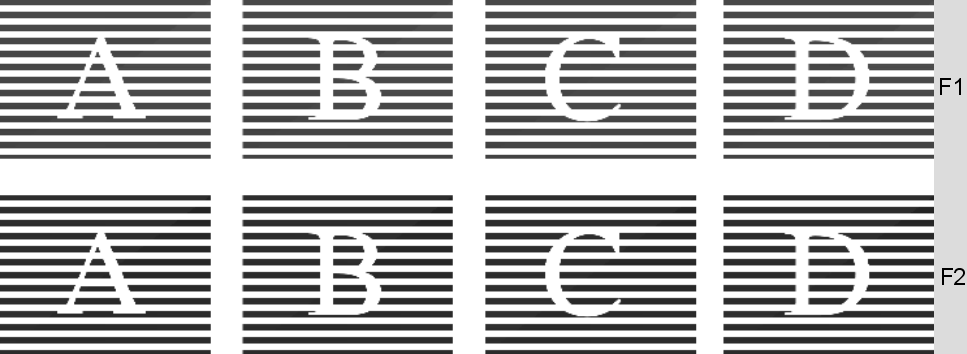2:3 Pulldown is added when 24 fps film material is transferred to 60i tapes using the telecine method. The same images that made up 24 frames of film must now make up 30 frames of video. In other words, for every 24 film frames six “new” video frames must be added. To accomplish this, the film frames are first divided into fields. The fields are then distributed across frames in a regular pattern to create the new frames with the smoothest results and least disturbance of the original material.
There are two kinds of pulldown:
Regardless of the kind of pulldown used, the resulting pattern is the same. The converted video consists of sequences of three intact film frames separated by two hybrid frames.
While the intact frames are identical to their sources, the hybrids consist of fields from two different film frames. If viewed as stills, the hybrid frames appear jittery—because the fields do not originate from the same moment in time. (When played back in the full sequence, the jitter is virtually imperceptible.) When working with 24p sources in Backdraft Conform, it is important to keep the jitter frames in mind. These are the markers for setting up the automatic pulldown removal on capture.
The pulldown transfer process is as follows:











